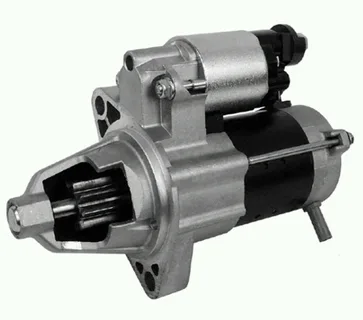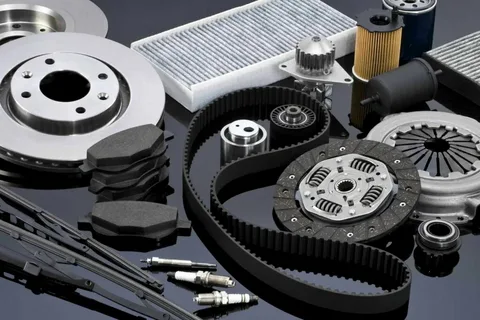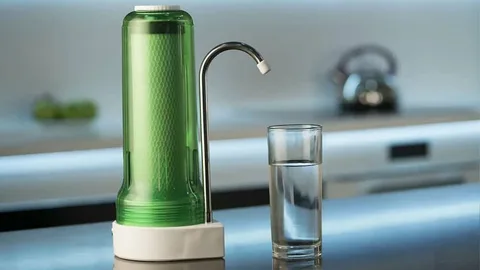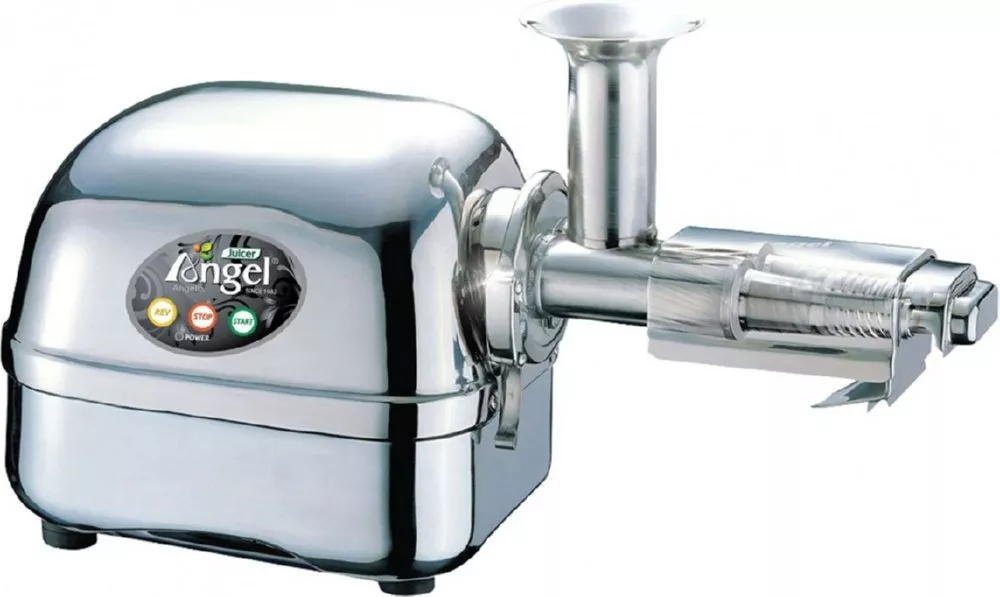Are you tired of those frustrating moments when your trusty Honda CR-V refuses to start? You’re not alone! The starter motor is often the unsung hero behind your vehicle’s reliable performance, and understanding this critical component can save you time, money, and many headaches. In this complete guide, we’ll dive deep into the intricacies of the Honda CRV starter Motor—what it does, everyday issues that arise, how to troubleshoot problems like a pro, and essential maintenance tips to keep your engine roaring for years whether you’re a seasoned car enthusiast or looking to understand your vehicle’s inner workings.
Understanding the CRV starter motor
The starter motor is an essential component of the Honda CRV’s engine and is responsible for initiating the combustion process that powers your vehicle. Without a functioning starter motor, your car could not start or move. This section will explore the Honda starter motor and its crucial role in keeping your vehicle running smoothly.
The function of the Starter Motor:
The primary function of the CRV starter motor is to convert electrical energy into mechanical energy, which initiates the engine’s rotation. Turning your key in the ignition sends a signal to the starter motor to engage with the flywheel. The flywheel then turns and starts rotating the crankshaft, which begins the combustion process and allows fuel to enter your engine’s cylinders.
Components of a Starter Motor:
A typical Honda starter motor consists of several components working together to initiate the engine. These include:
1. Armature:
This is a cylindrical metal core that rotates within coils of wire called field windings.
2. Field Windings:
These are made up of copper wires wrapped around an iron core, and when supplied with power from your battery, they create an electromagnetic field.
3. Commutator:
As the armature rotates, it passes through this segmented ring that directs electricity from field windings to armature coils.
4. Brushes:
These spring-loaded carbon blocks maintain contact with commutator segments and transfer electricity from the battery to the armature.
Function and Importance of the starter motor in a Car
The starter motor is a crucial component of any car, including the Honda CRV. It is responsible for starting the engine and getting it running smoothly. In this section, we will delve deeper into the function and importance of the starter motor in a car.
Function:
The primary function of the starter motor is to provide enough torque to crank the engine and get it started. When you turn the ignition key, an electrical signal is sent to the starter solenoid, which activates the starter motor. The starter motor turns a pinion gear that meshes with teeth on the flywheel or flex plate. This rotation creates enough force to turn over the engine and ignite fuel in each cylinder, thus starting your car.
Importance:
With a properly functioning starter motor, your car will start at all. This can be frustrating and inconvenient, especially in a hurry. Therefore, it is essential to understand how this component works so that you can identify any potential issues early on.
Another critical aspect of the starter motor is its ability to work efficiently even in extreme weather conditions. Whether it’s cold or scorching hot outside, your Honda CRV’s starter motor should be able to start your car without any trouble.
Furthermore, a good-quality starter motor can also improve fuel efficiency by reducing strain on other components like the battery and alternator. A faulty or weak starter can put unnecessary strain on these parts, causing them to fail sooner than expected.
Common Issues with the Honda Crv Starter motor replacement
As with any vehicle component, the starter motor of a Honda CRV can experience issues over time and may eventually require replacement. While this process is relatively straightforward, there are some common issues that owners may encounter during the replacement process.
One of the most common issues is difficulty locating the starter motor. In older models of the CRV, the starter motor was situated on top of the transmission near the firewall. However, newer models have relocated it to below and behind the engine. This can make accessing and replacing without proper tools and knowledge challenging.
Another issue that may arise is compatibility. It is essential to ensure that you have purchased a compatible starter motor for your specific Honda CRV model. Some aftermarket starters may need to fit correctly or have wiring configurations different from OEM starters, causing complications during installation.
Additionally, while Honda Crv Starter motor replacement, it is crucial to disconnect the battery before beginning any work. Failure to do so could result in electrical shocks or damage to other components within your vehicle.
How to Diagnose the Starter Motor Problems?
Diagnosing starter motor problems in your Honda CRV can seem daunting, but it can be quickly done at home with some basic knowledge and tools. This section will discuss the steps you need to take to diagnose starter motor issues in your Honda CRV.
Step 1: Check the Battery
If your Honda CRV is having trouble starting, the first thing you should do is check the battery. A dead or weak battery could cause the starter motor to fail. Use a voltmeter to check the voltage of your battery. A fully charged battery should have a reading of around 12.6 volts. It may be time for a new battery if it is lower than that.
Step 2: Inspect Wiring and Connections
Next, inspect all the wiring and connections related to the starter motor. Loose or corroded connections can prevent proper power from reaching the starter and cause it to malfunction. Make sure all wires are securely connected and free of corrosion.
Step 3: Listen for Unusual Noises
Listen for any unusual noises from under the hood when trying to start your Honda CRV. A clicking sound could indicate that not enough power is reaching the starter motor, while a grinding noise could mean that the starter’s gears are worn out.
Step 4: Test the Starter Motor Solenoid
When starting your vehicle, the solenoid is responsible for engaging and disengaging the starter gear with flywheel teeth. To test this component, use a multimeter set in Ohms resistance mode and place one probe on each solenoid switch terminal while someone else turns on the ignition key. If functioning correctly, the meter should read between 0 and 5 ohms.
Upgrading Your Engine Starter Motor Honda CR-V for Better Performance
The engine starter motor, including the Honda CR-V, is a crucial vehicle component. It is responsible for starting the engine and ensuring smooth operation. Over time, the starter motor can wear out or become less efficient, leading to issues with starting your vehicle. If you have noticed that your Honda CR-V is taking longer than usual to start or making strange noises during startup, consider upgrading your engine starter motor.
An upgraded Engine Starter Motor Honda CR-V can improve the overall performance of your Honda CR-V and provide a more reliable and efficient start every time. Several options are available for upgrading your starter motor, each with benefits.
One option for upgrading your engine starter motor is a high-torque version. High-torque starters have a higher power output, which results in faster and smoother starts. They are also more durable and can withstand extreme temperatures better than standard starters. This makes them an ideal choice for those who live in areas with harsh weather conditions.
Another popular upgrade option is the gear reduction starter motor. This type of starter uses gears instead of direct contact between the flywheel and armature (the rotating part of the starter). The gear reduction design allows for increased torque output while using less energy from the battery. As a result, this type of starter provides quicker starts with less strain on other components such as wiring and batteries.
Consider upgrading to a permanent magnet (PM) style starter motor. PM starters use rare-earth magnets instead of traditional electromagnets found in most starters. These magnets offer more vital magnetic fields, resulting in faster cranking speeds and improved performance compared to conventional starters.
Maintenance Tips for a Longer-Lasting starter motor
The starter motor is an essential component of any vehicle, including the Honda CRV. It starts the engine by turning the crankshaft and initiating the combustion process. Without a functioning starter motor, your car won’t be able to start, leaving you stranded.
To ensure that your Honda starter motor lasts as long as possible, there are some maintenance tips that you should keep in mind. These tips will not only extend the lifespan of your starter motor but also save you from costly repairs or replacements.
1. Keep Your Battery in Good Condition:
One of the main reasons for starter motor failure is a weak or dead battery. The starter relies on the battery’s power to turn the engine, and if it doesn’t receive enough energy, it can put excessive strain on the starter motor and cause it to fail prematurely. To avoid this, regularly check and maintain your car’s battery according to manufacturer recommendations.
2. Inspect Electrical Connections:
Another common cause of starter motor issues is loose or corroded electrical connections. Over time, these connections can become dirty or loose due to exposure to heat and moisture. It is crucial to periodically inspect these connections and clean or tighten them as needed to ensure the starter motor’s proper functioning.
3. Pay Attention to Warning Signs:
If your Honda CRV takes longer than usual to start or makes grinding noises when starting up, it could be a sign of impending starter failure. Ignoring these warning signs can lead to more significant problems with your car’s starting system and result in expensive repairs. Therefore, pay attention to any unusual sounds or behaviours while starting your vehicle and get them checked out by a professional mechanic if necessary.
Conclusion
The starter motor is a crucial component of your Honda CRV, and it is responsible for starting the engine and keeping it running smoothly. Understanding how it works and knowing the signs of a failing starter motor can ensure your vehicle stays in top condition. Regular maintenance and proper care are vital to prolonging the lifespan of your Honda CRV starter motor. With this complete guide, we hope you have gained valuable knowledge about this critical part and will be able to keep your vehicle running efficiently for years to come.
FAQS
1. What is a starter motor, and what does it do in a Honda CRV?
A starter motor, also known as a starting motor, is an electric motor that initiates the engine’s operation in a vehicle. In the case of a Honda CRV, the starter motor works by turning the engine over until it reaches its designated speed, allowing fuel to be injected and ignited, which starts the engine.
2. How do I know if my Honda CRV starter motor is failing?
Several signs may indicate a failing or faulty Honda CRV starter motor. These include difficulty starting the engine or turning the critical multiple times before it starts, grinding noises when trying to start the car, and dimming headlights when attempting to start the vehicle.
3. Can I replace my Honda starter motor on my own?
Replacing a starter motor can be complex and requires proper knowledge and tools. If you have experience working with engines or electrical systems, you can replace them by following specific instructions provided by your car manual. However, it is always recommended to seek professional help from a certified mechanic.
| Related Business Listings |
| Contact Directory |
| Local Business Profiles |






